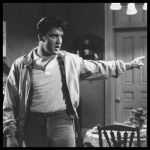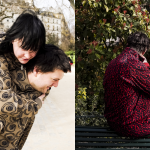
The Baracuta CasualCore
The re-launch of the casual style and the reinterpretation of an icon
June 10th, 2019
From Hollywood to Harvard and Yale, to Elvis Presley concerts or Mods Lambrettas. Baracuta's history has spanned throughout almost half a century of Western culture, becoming a brand symbol of different cultural styles and legacies.
After having dominated the style in the middle of the 20th century, Baracuta's casual seems to be able to go back to meeting the aesthetic needs of the new generations, thanks to timeless garments like the Harrington Jacket. The brand does not seem to be just an intact image of itself but is entering a wider market thanks to collaborations with streetwear brands and new research on its archive. The materials and the fit has changed, rewriting the basics of casual fashion and bringing together the common taste towards more linear and sartorial silhouettes.

To confirm this, for SS19 the label has experimented with the garment dye and the use of Nylon on the iconic G9, techniques and materials never experienced before but adopted by many brands thanks to the growth of other casual brands such as Stone Island and CP Company. The review in some cases has coincided with much more marked changes, as in the collaboration with Engineered Garments, in which one of the Harrington symbols has been removed from the sides: the Fraiser Tartan lining. The checkered motif of the Lovat clan of Scotland is one of Baracuta's symbols since the two Miller brothers - founders of the Manchester brand - asked permission from Lord Simon Christopher Joseph Fraser, Commander of the clan himself and known to be one of the coolest men in his Majesty's army at the turn of the two wars.
In the fashion of the drop and exclusive releases, very rarely does the shape succeed in coinciding with a precise identity, for Baracuta in some ways the problem seems to be the opposite, the tradition has hidden in many cases the variety and originality, from fabrics to patterns that find their own outlet in collaborations.
The English brand in recent years has presented collaborations that reflect a new street taste, with consolidated and unestablished realities that have always shown a certain affinity with the cool British taste of which Baracuta was a promoter. From Stüssy to Noah up to M1992, the latest tools fit into a specific imaginary, close to skating culture, a phenomenon that more than any other helped the acceptance of regular and comfortable fit trousers.
Although with different stories than those that linked it to the ska groups, Swinging London and the Rebel Without a Cause described in 1955 by James Dean and Nicholas Ray, in recent years the brand has found an affinity with the aggressive expressiveness of the new subcultures.
Even in recent projects, Baracuta maintains the same dialogue with art, an example is a project presented during the last Milan Design Week "The World Within", in which dance, sculpture and music tell the soul of Baracuta and WP, the group that bought the brand in 2012.
Just as on the eve of the Second War it is the middle class, and not that of the Manchester Golf Club, that is relaunching the Baracuta, adopting it as a symbol of a taste that is increasingly going towards a simplification of volumes. The rediscovery of the brand of John and Isaac Miller is the natural consequence of the Heritage, Normcore and Workwear style, broken down precisely in the Harrington Jacket.
Another key to understanding the recent success of the brand is the success of the custom, which has found a challenge not only in the sneakers but in the reinterpretation of classics for a long time untouchable like the G9.

If social networks are a more or less true reflection of our personality, the idea of what has become Baracuta can have it by looking at the brand's Instagram feed. Everything is balanced in chronological terms, between modernist architecture in Seoul, archive shots of English pop culture and macro on buttons and patterns. Modern and adequate elegance still has a place in a variety of fashion languages.





























































